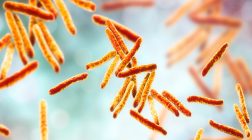Despite decades of research, cancer is still a major killer in the Western world, accounting for 13% of all deaths annually.
Oncolytic Vaccines: An Inside Job

A key challenge facing cancer researchers is the development of therapeutics that specifically target cancer cells and leave healthy cells untouched. This challenge has only become harder now that we understand that cancer is a highly personalized disease, with tumours composed of a heterologous population of cells that vary not only between patients but also within patients. Dr John Beadle, CEO of PsiOxus Therapeutics, discusses a rapidly maturing strategy that harnesses the biology of viruses to target and destroy cancer cells of different types.
Despite decades of research, cancer is still a major killer in the Western world, accounting for 13% of all deaths annually.¹ Arguably the world’s largest therapeutic market, oncology drugs generated an estimated $64.6 billion in pharmaceutical revenues in 2011, ensuring that pharmaceutical and biotechnology companies are always on the hunt for new ways to treat the disease.²
Improving Cancer Treatment
As a complex disease taking many forms, there are several strategies available for treating cancer, including surgery, radiation, chemotherapy and most recently, the so-called ‘targeted therapies.’ Each approach provides a unique set of advantages, disadvantages and side effects. Long-term survival, however, remains an elusive goal when treating many forms of cancer and significant challenges still exist, with an ever-pressing need to create new anticancer agents with improved selectivity and potency for targeting and killing tumour cells.
One particular challenge is that the exact genetic and phenotypic nature of cancer cells can vary significantly, not only from patient to patient, but even within the same individual. Each cancer patient can be said to have their own personal disease, formed from cancer cells with a unique set of mutations that will also likely undergo change with time. Such diversity means that the response of cancer to therapies tends to be just as variable. Although the newer targeted therapies have increased efficacy and selectivity against tumour cells that carry a specific gene mutation (the ‘target’), many have little or no efficacy if that mutation is absent in some or all of the cancer cells in any given patient.
Vaccination Against Cancer
One potentially exciting therapeutic strategy involves the creation of therapeutic vaccines against cancer cells, offering increased selectivity and enhanced efficacy across a broader spectrum of patients. As a highly specific and personalized therapy, such cancer vaccines may be particularly effective at producing long-term disease control and, at the same time, presenting far fewer negative side effects.
The concept of therapeutic cancer vaccines has been around for many decades. Early attempts at developing therapeutic vaccines to treat cancer focused upon the use of tumour associated antigens (TAAs), which are proteins that are either present exclusively on the surface of cancer cells compared with normal cells, or in much greater abundance. The aim of cancer vaccines based on TAAs is to trigger a strong immune response, leading to an immunological rejection of the tumour cells. Through the informed combination of specific TAAs with potent adjuvants and other techniques, this form of cancer vaccine is starting to show exciting promise in the clinic. Vaccines using this approach include the autologous dendritic cell vaccine sipuleucel-T (Provenge, Dendreon Corporation), which uses the prostatic acid phosphatase antigen to treat prostate cancer; and GSK’s adjuvanted (MPL, QS21 and CpG liposome) MAGE-3A-based vaccine, which is currently in Phase III clinical trials for the treatment of lung cancer and melanoma.
The TAA method of treatment has the potential to provide good efficacy and a very high degree of selectivity. The limitation with this approach, however, is much the same as for other targeted therapies, in that it can only target cancer cells that express a particular TAA. Cancer cells lacking that particular TAA will not respond at all and cancer cells that mutate and down regulate that TAA may be able to “escape” from the vaccine. As each patient’s tumour will have its own ‘finger print,’ expressing a different range and combination of TAAs, we are unlikely to find a single TAA-based vaccine capable of killing all cancer cells.
An alternative approach is the development of ‘personalized’ cancer vaccines, which harvests the patient’s own cancer cells to produce a vaccine just for them by processing them in the laboratory to produce an autologous vaccine. This approach may produce powerful vaccines specific for each patient’s cancer. Creating such vaccines in this way will, however, be a highly resource- and time-intensive process, with individuals requiring a new, personalized treatment regime. To circumvent some of these drawbacks, several drug developers are creating a form of off-the-shelf product that can be administered without the need for the harvesting or processing of patient cells yet still produces a personalized vaccine effect. This new approach co-opts the patient’s own cancer cells, such that they produce the vaccine in situ from within the tumour itself.
Using Viruses to Destroy Cancer from the Inside
Oncolytic vaccines take advantage of the way certain viruses invade human cells, acting to selectively infect and replicate within them, before triggering cell lysis and death. An oncolytic virus will preferentially complete one or more of these steps in cancer cells leaving the patient’s normal cells intact. As a result of rapid viral replication, each infected cell contributes to the
Figure 1. Oncolytic virus amplification in a human lung cancer cell. ColoAd1 production ‘factories’ are present in the nucleus (uniform icosahedral particles) 72 h after infection.
downfall of the tumour as a whole, lysing to release thousands of new copies of the virus to produce a self-amplifying wave of infection within the tumour (Figure 1). When each cancer cell ruptures, it releases a wide range of inflammatory mediators (potent natural adjuvants), as well as multiple, different cell-specific TAAs, triggering a personalized immune response targeting the patient’s own tumour across a range of different TAAs. The virus effectively forces the cancer cells to produce an in situ multivalent cancer vaccine targeted against similar neighbouring cells. Oncolytic vaccines thus have a dual mechanism of action, characterized by an immediate wave of oncolytic cell death, followed by a prolonged, anticancer ‘vaccination’ mediated by the host immune system.
One such treatment currently in clinical trials is, for example, ColoAd1 (developed by PsiOxus Therapeutics) an oncolytic adenovirus to treat metastatic colorectal cancer. Instead of being deliberately engineered based on current knowledge of cancer and viruses, the ColoAd1 virus was developed using the evolutionary power of directed selection. Starting with a large chimeric library of viruses, multiple rounds of selection produced ColoAd1 (Figure 2), a virus specifically optimized to infect and rapidly kill cancer cells, but unable to replicate in normal cell types. In effect, through the selection process, ColoAd1 has ‘gained’ the ability to replicate in the cancerous environment, but ‘lost’ the ability to replicate in the natural adenoviral environment.
Standard chemotherapy agents, such as the topoisomerase I inhibitor, irinotecan, exhibit relatively poor selectivity for cancer cells, accounting for the severe side effects observed in the clinic. By efficiently and specifically infecting cancer cells, ColoAd1 destroys them with more than 1200-fold potency when compared with normal cells in a direct killing assay. As expected, irinotecan shows little selectivity for killing cancer cells compared with normal cells, unlike the targeted ColoAd1 virus (Figure 3).
In addition to good potency and selectivity, ColoAd1 also shows excellent stability in human blood, meaning that it can be reliably delivered by systemic intravenous delivery. Once
Figure 2. Using selection to develop a virus that specifically infects cancer cells.
administered, the virus can only readily leave the blood stream at points of leaky vasculature and thus tends to accumulate in tumour beds, primarily because of their abnormal blood vessels (much the same as for liposomal drug delivery). Once inside the tumour, the virus can replicate and amplify. This means that ColoAd1 can readily and efficiently be administered systemically to patients with metastatic cancer, spreading to and concentrating only in the sites of metastases.
ColoAd1 is currently under investigation in a multinational Phase I/II clinical trial that will involve up to 20 sites in Europe. Known as the EVOLVE (EValuating OncoLytic Vaccine Efficacy) study, the randomized Phase II component of this trial will investigate the efficacy of ColoAd1 for treating colorectal cancer patients who are already receiving first line therapy. The first patients have already received several doses of the virus at sites in Belgium and Spain. In total, the safety, biological activity and efficacy of ColoAd1 will be evaluated in 126 patients, with initial data expected by the end of 2013 and full results in 2015.
A Healthy Global Market with Significant Opportunity
Although the concept of using a vaccine-based approach to attack cancer cells emerged decades ago, it is only relatively recently that this new class of anticancer therapy has started to enter the market, receiving significant attention from the clinical community, pharmaceutical companies and venture capitalists. The first of this new class of cancer therapy to gain FDA approval and enter the market was Dendreon Corporation’s Provenge, a TAA-based vaccine for
Figure 3. Differential killing activity of ColoAd1 on normal and tumour cells, as compared to Irinotecan. Human hepatoma cells and normal human endothelial cells (HUVE) were exposed to a range of concentrations of either ColoAd1 or Irinotecan. After 5 days the remaining number of viable cells was determined.
prostate cancer. In 2011, the exciting potential of the oncolytic vaccine approach prompted Amgen Inc. to acquire BioVex, an oncolytic outfit based in Woburn (MA, USA) for up to $1 billion. Amgen now boasts the most advanced oncolytic vaccine currently in development; the herpes-based T-vec (talimogene laherparepvec), which is in the midst of Phase III clinical trials for the treatment of advanced melanoma. The Oxford, UK-based oncolytic experts PsiOxus, recently secured $34 million in Series B funding to propel ColoAd1 into the Phase I/II EVOLVE study for metastatic colorectal cancer. This was rapidly followed by a further announcement of $5.4 million to fund the Phase I/II OCTAVE (Ovarian Cancer Treated with Adenovirus) study in metastatic ovarian cancer, which will initiate in 2013. Other companies with mid-stage oncolytic programmes include San Francisco’s Jennerex Biotherapeutics and Oncolytics Biotech, based in Calgary, Canada.
Recent clinical successes using a variety of cancer immunotherapeutics is turning cancer vaccines into a hot area of investigation. Offering particular promise, oncolytic vaccines have observers eagerly await the results of these mid- and late-stage clinical programmes. In the future, it is likely that replicating oncolytic cancer vaccines, such as ColoAd1, will provide an important platform technology in the fight against cancer, enabling targeted treatment with greater efficacy and minimal side effects.
References
1. A. Jemal, et al., “Global Cancer Statistics,” 61(2), 69–90 (2011).
2. www.evaluatepharma.com/worldpreview2018.aspx.
Author
Dr John Beadle
PsiOxus Therapeutics













